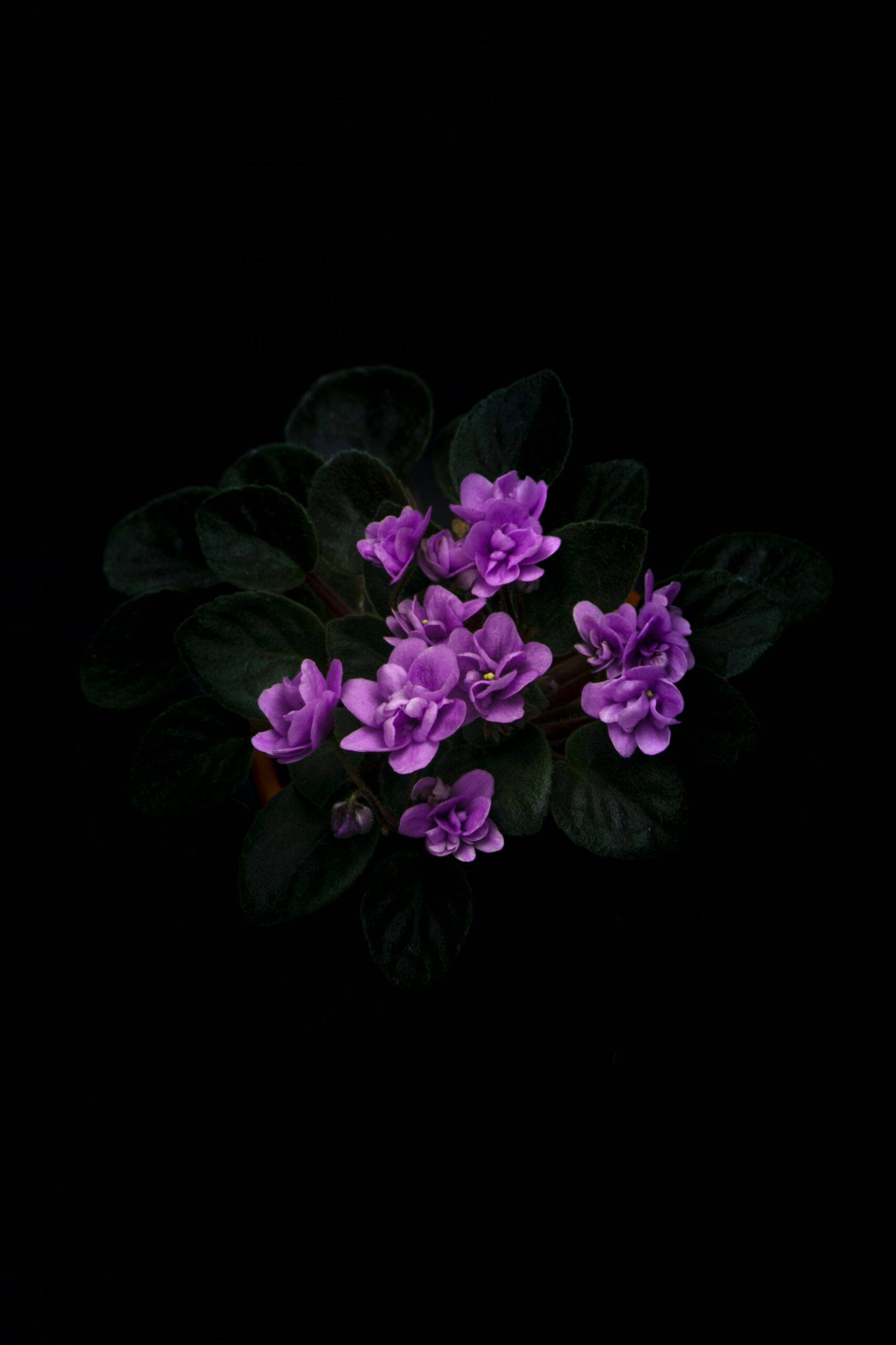Understanding Edible Flowers
Edible flowers are not only a feast for the eyes but can also elevate the taste experience of a cake. As a home baker who loves to create special occasion treats, I’ve found using edible pressed flowers for cakes to be one of the most enchanting ways to decorate. Let me share some key points to ensure that you too can safely and effectively incorporate these natural beauties into your cake designs.
Safety First
When I first started decorating cakes with flowers, my top priority was to ensure they were safe to eat. It’s crucial to use flowers that are indeed edible and free from pesticides or harmful chemicals. I always recommend using organic flowers or those specifically labeled as edible, as suggested by A Beautiful Mess. This step helps in maintaining the integrity of your creations and protects the health of those who will savor your cakes.
Before adorning your pressed flower cake, it’s also advisable to place a barrier, like parchment paper, between the cake’s surface and the flowers. This prevents any potential contamination from the flowers directly touching the frosting or icing, ensuring the cake remains safe to consume.
Picking the Right Variety
The variety of edible flowers is vast, and the right choice can complement the flavor profile of your cake while adding stunning visual appeal. Some of my go-to flowers include pansies, violets, marigolds, and roses. These blooms not only beautify the cake but also introduce subtle flavors that can enhance the overall taste experience. For a more detailed list of varieties, check out my article on edible dried flowers for cakes.
When selecting flowers, I ensure they are at their peak by following the advice from Sustainable Holly: pick them in the morning after the sun is up. This is when they are fully open, vibrant, and hydrated. Additionally, to ensure you get the best quality, it’s important to grow your own or source from a trusted grower who does not use chemicals or sprays.
By understanding the safety and variety of edible flowers, you can confidently select the perfect blooms for your cake. In the next sections, we’ll discuss how to prepare and press your blossoms to create the most stunning edible pressed flower cake designs.
Preparing Your Blossoms
Crafting an edible pressed flower cake requires meticulous preparation of the botanical elements to ensure they are safe and visually stunning. The process I follow is thorough, and I’ve found it to be both rewarding and essential for the best results.
Cleaning and Inspection
Before I incorporate any flowers into my cake designs, I ensure they are clean and free from any contaminants. This involves a gentle wash to remove potential residues, followed by the careful removal of unwanted parts. According to A Beautiful Mess, the petals are typically the sole part used for decorating cakes, which means stems and leaves have to be discarded.
Moreover, it’s crucial to remove the pistils and stamens to avoid the introduction of any bitterness and reduce the chance of allergic reactions, as these parts can be problematic (The Chronic Homestead).
After cleaning, I conduct a thorough inspection to ensure that only the best quality petals make it onto the cake. Any discolored or damaged petals are set aside, as they can detract from the cake’s aesthetic appeal.
Pressing for Perfection
The pressing process is where the magic happens, turning vibrant blossoms into delicate, paper-thin decorations fit for a pressed flower cake. I follow a careful drying and pressing method, typically laying the flowers between parchment paper and placing them within the pages of a heavy book or using a specialized flower press. This technique, detailed by My Cake School, ensures the flowers maintain their color and shape.
The pressing period varies, but I find that several days to a couple of weeks is generally sufficient for the flowers to dry completely and become suitably flat for cake decoration. It’s a slow process, but patience is key for achieving the best results.
| Step | Description |
|---|---|
| Washing | Gently rinse and remove stems, leaves, pistils, and stamens. |
| Drying | Pat dry with a paper towel to remove excess water. |
| Pressing | Place between parchment paper and within a heavy book or flower press. |
| Waiting Period | Wait several days to weeks until fully pressed and dried. |
By taking the time to properly prepare your blossoms, you can ensure that your edible pressed flowers for cakes not only look beautiful but are also safe for consumption. Remember to source your flowers from reputable providers who specialize in edible varieties (Cocktail Safe), and steer clear of any inedible flowers to avoid any health risks. With the right preparation, your cake can become a canvas for edible artistry that captivates the senses and elevates your celebration.
Decorating Your Cake
As an aficionado of cake decoration, using edible pressed flowers can transform a simple cake into a stunning work of art. The delicate beauty of flowers adds an elegant touch to any cake, making it perfect for birthdays, festivals, and special occasions. Here, I share my techniques for adorning your pressed flower cake and creating a safe, edible masterpiece.
Placement Techniques
When I arrange edible pressed flowers for cakes, I consider the overall design and the type of occasion. For a symmetrical design, I start by placing the largest blooms at the center or focal point of the cake and work my way outwards with smaller flowers and foliage. For a more natural, organic look, I scatter the flowers in an asymmetrical pattern, which often includes cascading elements down the sides of the cake.
To ensure that the flowers adhere to the cake without damaging the icing, I use a small dab of frosting as ‘glue.’ This technique is especially useful for heavier flowers that may slide off a slick surface. I also use tweezers for precise placement, which allows me to adjust the flowers without disturbing the surrounding decorations.
Creating a Barrier
One of the most important steps I take when using edible dried flowers for cakes is to create a barrier between the flowers and the cake’s frosting. This is crucial for maintaining food safety, as some flowers may carry residues that are not intended for consumption. According to A Beautiful Mess, placing a piece of parchment paper beneath the flowers can serve as an effective barrier.
Here’s a simple method I follow:
- Cut the parchment paper into small, inconspicuous shapes that fit the size of the flowers.
- Place the paper on the frosting where you intend to position the flowers.
- Gently press the flowers onto the paper, securing them with a dab of frosting if needed.
This barrier method not only protects the integrity of the cake but also makes it easier for guests to remove the flowers if they prefer not to consume them. It is also important to remove the pistils and stamens from the flowers before pressing them, as they can impart a bitter taste and potentially cause allergic reactions (The Chronic Homestead).
Decorating your edible pressed flower cake with these methods can elevate your cake design to an art form, delighting guests with both visual appeal and the assurance of safety. Remember, while flowers add a gorgeous visual element, it’s your responsibility as the cake artist to ensure that every aspect of your creation is safe and enjoyable for everyone to eat.
The Beauty of Variety
The world of edible flowers is as diverse as it is colorful. When I incorporate edible pressed flowers into my cake designs, I revel in the variety available to me. Each type of flower brings its own unique look and flavor, allowing for limitless creativity in cake decoration.
Popular Choices
When selecting flowers, I consider the aesthetic and taste they will bring to the cake. Some popular edible flowers for cakes include:
- Pansies: Delicate and slightly sweet, pansies come in an array of vibrant colors.
- Violets: These tiny blooms offer a floral taste and make a charming garnish.
- Marigolds: With their bright orange and yellow hues, marigolds have a citrusy flavor.
- Roses: They are classic and romantic, with a subtle perfume-like essence.
According to A Beautiful Mess, these flowers not only add visual appeal but also provide subtle flavors that complement the cake. For those interested in a comprehensive guide to choosing and using dried edible flowers, Country Living offers a great list of options.
| Flower Type | Flavor Profile | Color Varieties |
|---|---|---|
| Pansies | Slightly sweet | Multiple |
| Violets | Floral | Purple, Blue |
| Marigolds | Citrusy | Orange, Yellow |
| Roses | Perfume-like | Red, Pink, White |
Flavor Combinations
Choosing the right flower for the right cake involves considering both visual appeal and flavor compatibility. Here are some combinations I love:
- Pansies with lemon cake: The subtle sweetness of the pansy pairs well with the zesty lemon flavor.
- Violets with chocolate cake: The floral notes of violets complement the depth of chocolate.
- Marigolds with orange or carrot cake: The citrusy kick of marigolds enhances the fruity notes in these cakes.
- Roses with vanilla or red velvet cake: The elegant rose aroma gently infuses these classic flavors.
When selecting edible pressed flowers for cakes, it’s not just about the decoration—it’s about crafting an experience that tantalizes all the senses. Be sure to consider both the visual impact and the taste profile to create a pressed flower cake that is as delicious as it is beautiful.
For those interested in exploring the full potential of edible flowers in their baking, I recommend checking out the selection of edible dried flowers for cakes. Whether you’re creating an edible pressed flower cake or simply seeking inspiration, the variety of flowers available offers a palette of flavors and colors to elevate any cake design.
Health Benefits and Nutrition
Incorporating edible pressed flowers into cake designs not only adds a touch of elegance but also infuses the dessert with nutritional benefits. As a birthday and festival food maker at home, I find it essential to understand the nutritional value of these delicate garnishes and the advantages of choosing organic over non-organic blooms.
Edible Flowers’ Nutritional Value
Edible flowers are more than just pretty decorations; they pack a surprising amount of vitamins, minerals, and antioxidants. I’ve learned that different flowers offer various health benefits, which can contribute positively to the overall nutritional profile of my culinary creations. For instance, roses are high in vitamin C, while lavender has calming properties that can aid digestion.
Here’s a brief overview of the nutritional content of some popular edible flowers:
| Flower Type | Nutritional Highlights |
|---|---|
| Nasturtium | Vitamin C, Iron |
| Calendula | Antioxidants, Lutein |
| Lavender | Vitamin A, Calcium |
These details come from reliable sources like Sustainable Holly and Country Living, emphasizing the value these flowers add beyond aesthetics.
Organic vs Non-Organic
When choosing edible pressed flowers for cakes, I always consider whether to use organic or non-organic options. Organic flowers are grown without synthetic pesticides or fertilizers, making them a healthier choice for my edible pressed flower cake designs. Non-organic edible flowers, on the other hand, may contain traces of pesticides or other chemicals; thus, it’s crucial to source them from trustworthy sellers or to cultivate them myself to ensure their safety for consumption.
The table below summarizes the differences between organic and non-organic edible flowers:
| Aspect | Organic Edible Flowers | Non-Organic Edible Flowers |
|---|---|---|
| Pesticides | None or minimal | May contain traces |
| Health | Healthier choice | Potential risks |
| Sourcing | Reputable organic farms | Reputable sellers, self-grown |
Information adapted from The Chronic Homestead and A Beautiful Mess.
In conclusion, as I craft my pressed flower cake, I take care to select flowers that not only enhance the cake’s beauty but also contribute to its nutritional value. Whether I opt for dried edible flowers or fresh ones, I prioritize organic varieties to offer a healthier, more natural option for my guests. By doing so, I ensure my edible dried flowers for cakes provide both visual delight and a wholesome touch to my festive treats.
Allergies and Sensitivities
Creating cakes adorned with edible pressed flowers is a delightful way to add visual appeal and a touch of elegance. However, as a conscientious baker, I’m aware that some individuals may have allergies or sensitivities to certain blossoms. It’s my responsibility to ensure that my pressed flower cake creations are not only beautiful but also safe for everyone to enjoy.
Identifying Potential Risks
Not all flowers are culinary safe, and some can even cause allergic reactions or contain toxic properties. Before I decide to incorporate any type of dried edible flowers into my cake designs, I make it a point to thoroughly research each flower. According to The Chronic Homestead, it’s crucial to avoid flowers like night blooming jasmine (Cestrum nocturnum), which is toxic to mammals, including humans.
Additionally, I take care to remove pistils and stamens from the flowers, as these parts can have a bitter taste and might cause allergic reactions in some individuals. This extra step helps to minimize the potential risks associated with consuming the flowers.
Communicating with Guests
Transparency is key when it comes to serving food with edible dried flowers for decorative purposes. I always inform my guests or customers about the presence of edible pressed flowers for cakes, as recommended by experts (Source). This communication can take the form of a note accompanying the cake, a label on the cake box, or a verbal heads-up when serving the cake.
| Flower | Known Allergens | Toxicity |
|---|---|---|
| Night Blooming Jasmine | – | Yes |
| Common Daisy | Pollen | No |
| Pansy | – | No |
For those with heightened sensitivities, I also offer alternatives, such as edible pressed flower cake designs that use only flowers known for their hypoallergenic properties. By taking these precautions, I can help ensure that my cakes are not only a feast for the eyes but also a safe and enjoyable experience for all my guests.
Growing Your Own
Growing your own edible flowers can be a rewarding endeavor for any birthday or special occasion food maker. It allows for complete control over the growing environment, ensuring the blossoms are safe for consumption and free from harmful chemicals.
Best Practices
When I embarked on the journey of cultivating my own edible flora, I realized the importance of adhering to best practices. It is advisable to only use flowers that have not been treated with chemicals or sprays, as highlighted by Sustainable Holly. Here are some of the best practices I’ve learned:
- Selecting the Right Soil: Opt for organic soil that is rich in nutrients, as this will help the flowers to grow robustly.
- Proper Watering: Ensure consistent watering to keep the soil moist, but avoid overwatering, which can lead to root rot.
- Sunlight: Most edible flowers require full sun, so place them in a spot where they receive at least six hours of sunlight daily.
- Natural Pest Control: To keep pests at bay, use natural predators or organic pesticides. This will prevent the flowers from chemical contamination.
- Companion Planting: Grow companion plants that can help repel pests and improve the soil quality.
By following these practices, I ensure that my edible flowers are not only beautiful but also safe and healthy for use in my edible pressed flower cake creations.
Harvesting Tips
Once your blossoms are thriving, the next step is to harvest them. Timing and technique are critical for preserving their vibrant colors and delicate structures. Here’s how I go about it:
- Best Time to Pick: Harvest in the morning after the dew has evaporated but before the sun is too intense. This is when the flowers are most hydrated and vibrant.
- Choosing the Right Blooms: Select flowers that are just about to open or are already in full bloom for the best visual appeal.
- Handling with Care: Snip the flowers at the stem, handling them gently to avoid bruising.
- Immediate Use or Preservation: If not using right away, store them in a cool place or start the drying process. For information on preserving your flowers, check out dried edible flowers and edible dried flowers for cakes.
Remember to remove the pistils and stamens before use, as they can be bitter and may cause allergies (The Chronic Homestead). For a comprehensive list of edible flowers and ideas for incorporating them into your cake designs, feel free to browse our collection of articles, including pressed flowers for cakes and edible pressed flowers.
By growing your own edible flowers, you can ensure they are safe for consumption and add a personal touch to your pressed flower cake designs. Whether you’re a seasoned gardener or a novice, these best practices and harvesting tips will help you cultivate beautiful, edible blossoms that are sure to impress your guests.




Leave a Reply